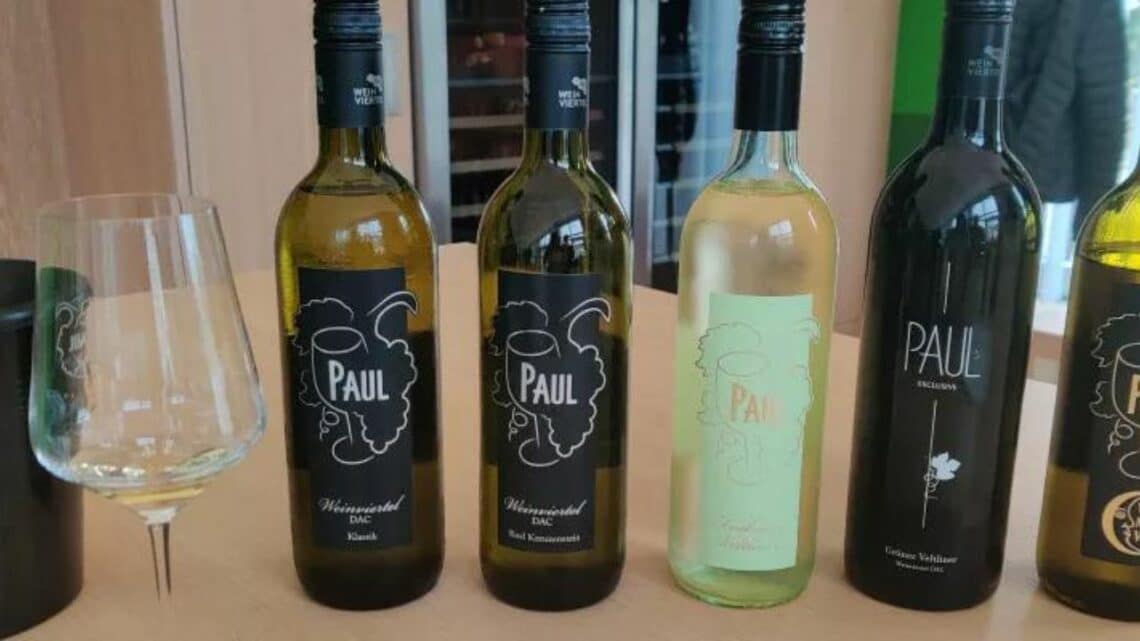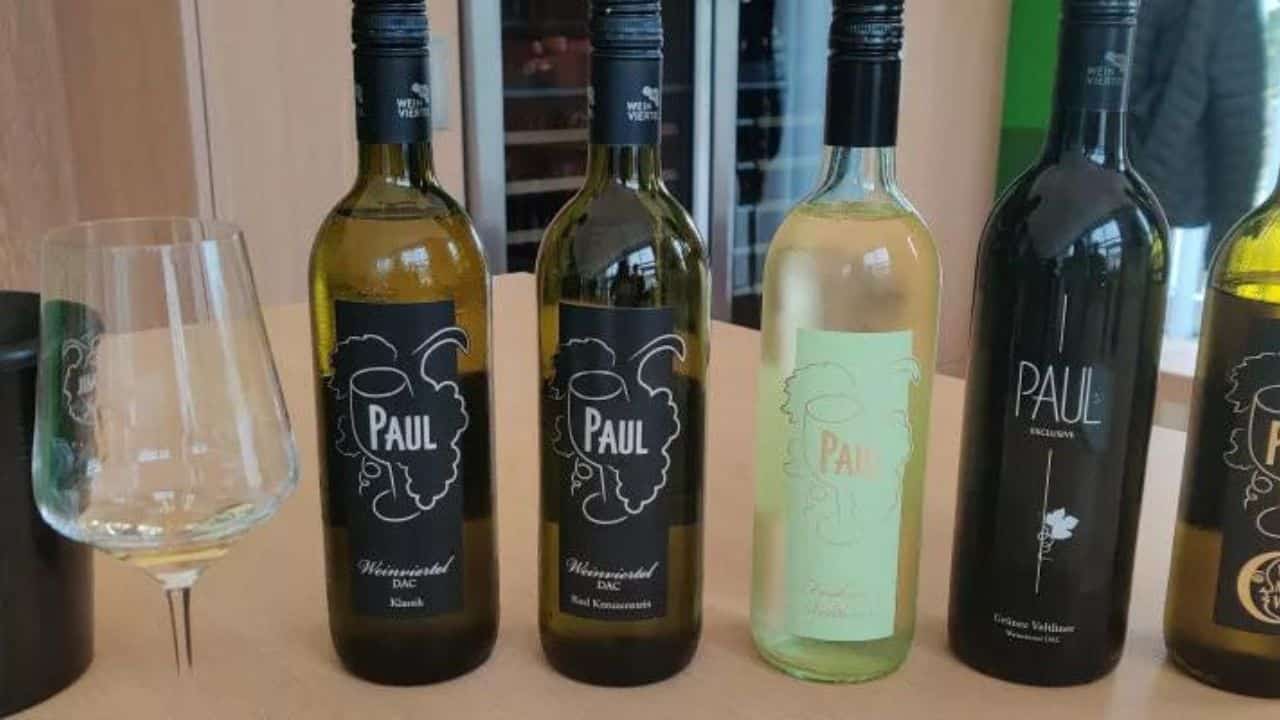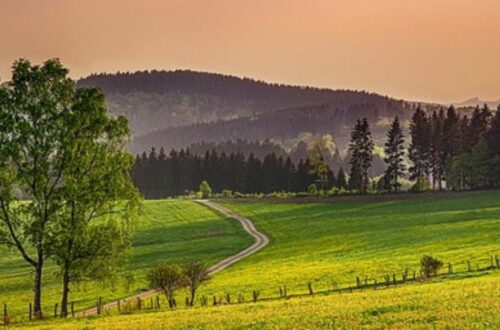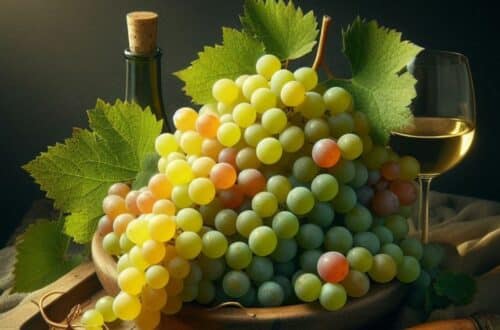
What is the leading grape variety of Austria?
Austria is best known for the quality of its white wines, made from both native Grüner Veltliner and Riesling.
In Austria, grape varieties don’t respect political boarders. If you want to know why, check out my post on the history of wine in Austria. For instance, Grüner Veltliner is found in Hungary as well.
A quick word on climate : as the Alps cover the entire west of Austria, the wine-growing areas are logically located in the east of the country. They enjoy a cool continental climate, with short summers and very harsh winters. The northernmost regions are cooled by northerly winds, while those closer to the Hungarian border are warmed by easterly winds. Annual weather variations are much smaller than in northern Europe.
Grüner Veltliner, Austria’s leading grape variety
Grüner Veltliner became popular in the 1950s thanks to Lenz Moser. He developed a method of high training (Hochkultur in German) that best well suited to this grape variety. The vineyard could be easily mechanized and the vines produced high yields.
However, we learned today that elevated canopy reduced ripeness level. Grüner Veltliner reaches better results with Guyot or cordon.
Grüner Veltliner has Traminer as one of his parents. It can grow on may soils but thrives on loess. It has thick skins and loose bunches which makes it resistant to a lot of diseases and easy to grow.
It produces fresh wines but rather nondescript if the yields are too high. However, if cultivated with care, this grape variety is able to give birth to concentrated and robust wines, with a good acidity. Young, it presents aromas and stone fruits with notes of white pepper. With age, it develops aromas of honey and toast.
Vinified in its “Klassik” version, the wines are fermented and aged in stainless steel containers. Vinified in its “Reserve” version, there is often an aging in barrels, new oak.
Actually, in 2008, the chemical compound, Rotundone, was discovered. It explains the peppiness.
Wines from Grüner Veltliner can usually be kept for a long time.
Grüner Veltliner in Austria
Grüner Veltliner gives outsanding results in Lower Austria (Niederösterreich) and more precisely in Wagram, Kremstal, Kamptal, Traisental and the Wachau.
If I may make a broad generalization, we encounter two soil types in this region : thin soils over primary rocks such as granite or gneiss and loess. Grüner Veltliner prefers the latters. Loess is wind driven sand. The winds come mainly from the Alps. You will thus see loess on east side of hills. These soils are rich in minerals which gives complexity to the wines.
In Traisental, there are 815ha of vines and Grüner Veltliner represents 464ha. There is more rain there than other regions but the wind blows a lot, which helps dry the grapes. There are diverse soils, with mostly clay.
The nearer you get to the Wachau, the more granite soils you will find. These soils bring freshness to the wines.
In Wagram, Grüner Veltliner represents half of the planted grape varieties. Soils are mostly loess.
The Weinviertel is Austria’s largest region. 3/4 of its wines are white and most of it is made from Grüner Veltliner. The northern part tends to be dry with warm days and cold nights. In the east, the climate is warmer. Soils are mostly loess, combined with gravel, clay or limestone.
It was the first DAC created in Austria (in 2002) and this enabled Austria to declare that Grüner Veltliner belonged to Austria.
In Carnuntum, Grüner Veltliner is also the most important variety. Carnuntum lies east of Vienna and was carved out of Donauland in 1993. Vineyards are on slopes and plateaux made of sand, loam, loess and gravel.
Grüner Veltliner has largely taken over other indigenous varieties in Thermenregion.
In Burgenland, Grüner Veltliner is also largely planted but not to the level of Niederösterreich.
A quick overview of the other grape varieties in Austria
Austria has excellent vineyards for world-renowned grape varieties such as Riesling, Pinot Blanc, Chardonnay, Muscat Blanc à Petits Grains, Traminer, Pinot Noir, Merlot, Cabernet Sauvignon, and Syrah.
However, the range of indigenous grape varieties is even more extensive. It is dominated by Grüner Veltliner, as mentioned above. Varieties such as Neuburger, Rotgipfler, Zierfandler, Roter Veltliner or Zweigelt, Blaufränkisch, St Laurent, and Blauer Wildbacher are particularly appreciated nowadays.
In the genetic makeup of many varieties, Traminer and Heunisch often appear as parent grapes. Traminer, one of the oldest grape varieties in Europe, was likely selected from wild vines in ancient times. The term Heunisch refers to a family of varieties that may have been imported from Hungary to Austria by the Magyars and quickly spread there.
At least 75 of the currently known varieties can be traced back, more or less, to Heunisch, including Chardonnay and Riesling.
In Austria, vine cultivation and selection have a long tradition, supported by the didactic and scientific center of the Federal College of Viticulture and Pomology in Klosterneuburg, which celebrated its 150th anniversary in October 2010. It is indeed the oldest viticulture school in the world.
The term “autochthonous” refers to grape varieties that are born almost exclusively in a specific region through natural crossings or mutations and have a long history in their regions of origin. Over their long evolution, they have adapted perfectly to the local specificities and generally provide their best quality under these same conditions.
Today, autochthonous grape varieties are considered more as regional resources and valued as the basis for wines that unmistakably reflect their authentic terroir.
A new variety is a deliberate combination of two or more grape varieties (single or multiple crossings) with the aim of combining all the qualities of the parent varieties while minimizing their disadvantages. Despite all efforts, success is always only partial. The selection of varieties is a long and costly process.
In Austria, new varieties are selected at the educational and scientific center for viticulture and arboriculture in Klosterneuburg. The following new varieties are included in the range of authorized grape varieties for Qualitätswein (see here for the complete list).
- Varieties for white wine: Müller-Thurgau, Muskat-Ottonel, Scheurebe, Jubiläumsrebe, Goldburger.
- Varieties for red wine: Blauburger, Zweigelt, Rathay, Roesler.
Today, the selection mainly aims at improving resistance to fungal diseases. These new varieties are designated by the abbreviation PIWI (PI = Pilz = fungus, WI = widerstandsfähig = resistant). However, their resistance is always limited to partial resistance to one or more fungal diseases.
We now have a number of partially resistant grape varieties that require less phytosanitary treatment against fungal diseases. The following partially resistant new varieties are also included in the list of authorized grape varieties for Qualitätswein (see the complete list here).
- Varieties for red wine: Rathay, Roesler.
- Varieties for white wine: Blütenmuskateller, Muscaris, Souvignier Gris.
For grape varieties without controlled designation of origin or geographical indication with designation of the variety or vintage, the following partially resistant grape varieties can be planted.
- Varieties for white wine: Bronner, Cabernet Blanc, Johannister, Donauveltliner, Donauriesling.
- Varieties for red wine: Regent, Cabernet Jura, Pinot Nova.
Conclusion : What is the leading grape variety of Austria?
So, as you can see, Austria has a lot of white grape varieties but if you have to remember just one : its Grüner Veltliner. It is mostly found in Lower Austria. (where I give my favourite adresses per region!)
Other addresses can be found here!







